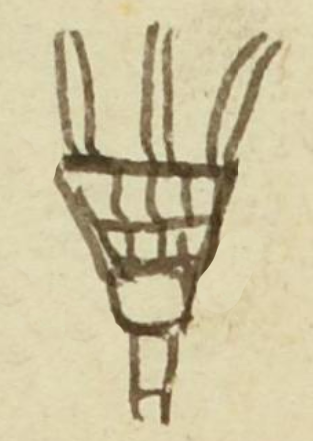Coxoli (MH579v)
This black-line drawing of the simplex glyph for the personal name, Coxoli (perhaps referring to “Pheasant,” which is coxolitli, or perhaps a fan with pheasant feathers), is attested here as a man’s name. shows a frontal view of what appears to be a feather fan. If the translation is correct, then the feathers come from a pheasant or the fan of feathers was perceived to resemble a pheasant. The fan shows part of a handle and, above that, a triangular, segmented shape or a shape with a checkered pattern, and, at the top, three apparent feathers.
Stephanie Wood
paltasal. coxolli
Baltazar Coxoli
Stephanie Wood
1560
Jeff Haskett-Wood
rituals, rituales, dances, bailes, feathers, plumas, fans, abanicos emplumados, faisanes, nombres de hombres

coxoli(tli), pheasant, https://nahuatl.wired-humanities.org/content/coxolitli
El Faisán, o el Abanico de Plumas de Faisán
Stephanie Wood
Matrícula de Huexotzinco, folio 579v, https://www.loc.gov/resource/gdcwdl.wdl_15282/?sp=238&st=image
This manuscript is hosted by the Library of Congress and the World Digital Library; used here with the Creative Commons, “Attribution-NonCommercial-ShareAlike 3.0 License” (CC-BY-NC-SAq 3.0).




